.jpg)
Dear Members (a note from Deb Hickey):
I live in New England. That makes me a Patriots fan. My family and I watched the Super Bowl at a friend’s house across town. With a few minutes left in the third quarter, the Patriots were down 28-3. No team has come back from a 10 point deficit in Super Bowl history, much less a 25 point deficit.
We could have packed our potato chips and headed for home, but we clenched our fists, strengthened our resolve, and hung in there. And, noting the determination in the eyes of Tom Brady and his teammates, we knew they weren’t giving up, even with the odds stacked against them.
The Pats fought back, tied the game in regulation time, and won 34-28 in overtime. Nothing like this had ever happened in Super Bowl history. The Patriots never backed down and they were victorious.
For the past several years, the proton community has been fighting a battle to ensure continued availability of proton therapy to patients with prostate cancer and other cancers. Sadly, private insurers, one by one, have been dropping off the grid and refusing to reimburse for proton therapy. They claim there is no scientific evidence proving that proton is superior to conventional radiotherapy.
Hundreds of patients have had to choose alternative therapies, essentially dictated by their insurance companies. They couldn’t wait months or years to navigate the complex, multi-step appeals process, knowing they could ultimately lose the appeal along with valuable time in fighting their cancers.
As I write this memo, my father, Bob Marckini, is in Jacksonville, FL at a workshop headed up by Dr. Nancy Mendenhall, Medical Director at the University of Florida Health Proton Therapy Institute. Sixteen proton centers are working together in a coordinated effort to secure funding for a study to compare proton therapy to IMRT for treating prostate cancer. The objective of the study is to determine whether the outcomes of proton therapy are truly better than conventional radiation therapy outcomes, because there have been no head to head comparative trials comparing these therapies.
Those of us who are close to proton therapy technology and patients who have benefited firsthand from proton therapy believe strongly that proton is superior, but a comparative study is needed to confirm this hypothesis.
Like the New England Patriots, the proton community and the BOB will “never, never, never give up.” We will continue to fight to ensure that proton therapy is available to patients who want the best treatment in the world to treat their cancers. In next month’s BOB Tales we will update you on the results of the workshop in Jacksonville and plans for moving the project forward.
In this month BOB Tales, we discuss the one thing you can do to improve your prostate cancer diagnosis. Also, does hormonal therapy make a difference when treating prostate cancer? Learn about the importance of aspirin in cancer prevention and heart protection. And there’s a new PET scan approved for prostate cancer that could take the place of the C-11 choline scan.
We hope you enjoy the March issue. As always, we welcome and encourage feedback. Just send an email to [email protected].
Deb Hickey
To print the BOB Tales newsletter or view the newsletter with a larger font size, click here for the PDF file.
In This Issue:
- Improve Your Prostate Cancer Prognosis with Physical Activity
- Does Hormonal Therapy Make a Difference When Treating Intermediate-Risk Prostate Cancer?
- Aspirin: Cancer Prevention, Heart Protection
- New PET Scan Approved for Prostate Cancer
- How Low Should Post-Treatment PSA Go?
- Eight Ways to Get Sugar Out of Your Life
- 10 Bad Habits that Age You
- Brain Teaser: Longest word has 190,000 letters!
.jpg)
Improve Your Prostate Cancer Prognosis with Physical Activity
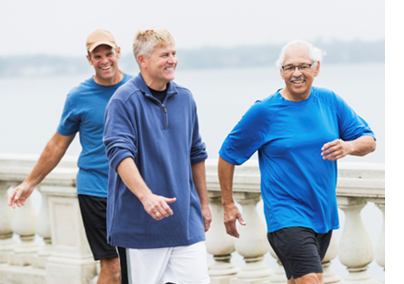 Everyone knows that exercise is good for you. If you’ve been diagnosed with prostate cancer, it becomes more relevant than ever.
Everyone knows that exercise is good for you. If you’ve been diagnosed with prostate cancer, it becomes more relevant than ever.
Some studies suggest that vigorous activity after a prostate cancer diagnosis may result in a lower risk of dying from the disease. Although it is not proven that physical activity prior to developing prostate cancer can help lower the risk of contracting it, exercising before a diagnosis may have an effect on the aggressiveness of the tumor.
Researchers reported that men who walked four to six hours each week prior to a prostate cancer diagnosis had a significantly lower risk of dying from the disease. Men who walked seven hours or more a week had an even greater reduced risk.
The American Cancer Society recommends that survivors of prostate cancer engage in a minimum of 150 minutes of moderate, or 75 minutes of vigorous, physical activity each week.
Does Hormonal Therapy Make a Difference When Treating Intermediate-Risk Prostate Cancer?
Newly diagnosed men with intermediate-risk prostate cancer often struggle with the decision on whether or not to have ADT (androgen deprivation therapy) also called hormonal therapy, in addition to their radiation therapy.
Side Effects
Doctors have long believed that adjunct ADT gives the patient a better chance of long-term, disease-free survival. The side effects of ADT may include loss of libido, hot flashes, fatigue, and breast enlargement. While these side effects are typically short-term, they are still frightening to most men.
Clinical Trial
URO Today reported on January 13, 2017 that a Phase III clinical trial is being conducted at Mayo Clinic (AZ), Northwestern Medicine Chicago Proton Center, Procure Proton Therapy Center (OK), and Hampton University Proton Therapy Institute on men with moderately aggressive, localized prostate cancer.
The purpose of the study is to compare the effects of proton treatment with and without ADT. The study is comparing the use of hypo-fractionated proton therapy (28 treatments) alone, to proton therapy with ADT.This is a randomized clinical trial involving close to 200 men with outcome measures of disease-free survival, grade 2 or higher genitourinary and gastrointestinal toxicity and other quality of life issues. Researchers are also monitoring testosterone levels of all subjects in the study.
The contact person for the study is Corey Woods, RN, MS, CCRC, [email protected], 630-836-8668. Learn more.
Aspirin: Cancer Prevention, Heart Protection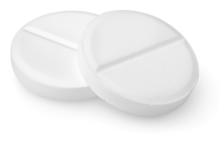
Colorectal Cancer
There is compelling evidence that aspirin reduces the risk of colorectal cancer (CRC). Researchers conducted a series of cohort studies over the past couple of decades. In two population-based cohorts (the Nurses Health Study, comprising 121,700 female registered nurses, and a parallel cohort comprising 51,539 men) they found that those taking aspirin had a lower risk of developing CRC over time. More specifically, they concluded that taking a daily aspirin consistently for six or more years reduced the risk for developing CRC by 30 – 40 percent. Other studies have shown short-term use of aspirin also reduced the risk of a recurrence of CRC when patients began an aspirin regimen after being treated for the disease.
Prostate Cancer
Another study has shown that regular aspirin use is associated with a slower rate of prostate cancer progression and a reduced risk of dying from the disease. According to one researcher, “Men with prostate cancer who took aspirin regularly had a 39 percent lower risk of dying from the disease.” However, aspirin use did not measurably reduce the overall incidence of prostate cancer. It also did not prevent high-grade cancers or locally advanced prostate cancers.
Heart Disease
In 2016, the USPSTF recommended the use of aspirin for prevention of CRC and heart disease. They recommended: “People aged 50 to 69 years who have a greater than 10 percent 10-year risk for cardiovascular disease (CVD) and who do not have higher risk for bleeding should consider taking low-dose aspirin to help prevent CVD and CRC.
More Benefits
Research has also shown aspirin can reduce the risk of many other cancers. In eight trials involving 25,000 patients, aspirin reduced the incidence of cancers of the esophagus, stomach, pancreas, lung, kidney, bladder and blood.
The Downside
There is a potential downside to the use of aspirin. It increases the risk of gastrointestinal (GI) bleeding. One study showed up to a two-fold increased risk in bleeding. Note that high-dose aspirin is associated with higher GI bleeding risk than low-dose and bleeding risks can be mitigated with certain medications.
Note: If you are not a Medscape member, you may sign up for a free account.
New PET Scan Approved for Prostate Cancer
A new and effective PET/CT scan for prostate cancer patients can detect the location and extent of cancer that has recurred after initial treatment. The Axumin 18-F scan was developed by Blue Earth Diagnostics and has been FDA and Medicare approved.
The Axumin scan is at least as sensitive as the choline scan and is rumored to potentially take the place of the C-11 choline scan. It is approved for use detecting lesions associated with recurrences, and due to its hypersensitivity, may eventually be used for primary tumor detection as well.
For now, this PET imaging may help fill a space where prostate cancer patients and their doctors are trying to make a treatment decision after surgery, and perhaps considering salvage radiation.

How Low Should Post-Treatment PSA Go?
We often hear from members who are worried because their PSA doesn’t seem to be dropping fast enough after treatment, or because their nadir (lowest stable PSA reading) isn’t close to zero. Generally speaking, the lower the nadir the better. But we have many members with PSAs that never dropped below 1.0, even many years after treatment. Our friend Charlie Einsiedler was a good example. Charlie was treated with proton therapy for his prostate cancer at age 87 and passed away 15 years later from natural causes at the tender age of 102. His PSA never dropped below 1.0.
On the subject of PSA nadir, we received the following email from one of our members who was treated almost eight years ago.
Does Hallmark have a congratulatory card for this?
My proton therapy at Loma Linda University Cancer Center was in 2009. I had no side effects during the treatment and have had none since. I’ve had my PSA checked every six months since the procedure, and my internist does a digital check during my annual physical.
My PSA results have always been very satisfactory. I know well that PSA will vary from test to test, and the important thing is that the number remains low and stable. That’s always been my result, and I’m thankful for that. Yet I can’t help but be a little envious when I’ve read or heard the PSA numbers of other proton alumni. They so often have numbers that start with a zero: 0.8, 0.5, 0.3 … As for me, I could never seem to get below 1.0.
My annual numbers are as follows:
|
Year |
PSA |
|
Year |
PSA |
|
2015 |
1.2 |
|
2011 |
1.5 |
|
2014 |
1.0 |
|
2010 |
1.1 |
|
2013 |
1.3 |
|
2009 |
10.8 |
|
2012 |
1.4 |
|
|
|
Imagine my elation this week when the lab results for my annual physical arrived. My new number is 0.9! I feel like I now have a membership in the exclusive “zero-point club.” To celebrate this morning I went to the Brotherhood of the Balloon website and updated the number in my personal profile.
.jpg) LLUCC’s “Life on the Line” Series Picked Up by WORLD Channel: BOB Member Featured
LLUCC’s “Life on the Line” Series Picked Up by WORLD Channel: BOB Member Featured
Loma Linda University Health’s first national television show, Life on the Line, features people fighting disease, facing natural disasters, coping with disabilities, and battling mental illness. The series takes an inspiring look into the resilience of humankind.
LLUH recently learned the show’s third season will be picked up by WORLD Channel, which airs programs across the U.S. at the same time. Launched in 2007, WORLD is produced and distributed by WGBH/Boston, American Public Television (APT) and WNET/New York in association with Public Broadcasting Service (PBS) and the National Educational Telecommunications Association (NETA). WORLD is distributed by APT and is carried by 73 licensees/156 stations representing 65.63 percent of U.S. TV households.
If you are interested in watching the program, visit the WORLD website and plug in your zip code to find out which channel you should watch.
Season 3 of Life on the Line will air on Mondays starting March 6 at 6 p.m. ET and 9 p.m. ET. BOB member Pat Purcell’s journey with proton treatment is part of this line-up. When Pat was diagnosed with prostate cancer in 2011 at a routine office health fair, he was shocked and fearful. “I had a great career, great health; I can’t even believe I’m sitting here talking to a physician about my tumor,” Pat recalls. Pat and his wife, Sharon, were set to fight this disease and explore every treatment option they could find. Learn how they found their way to proton therapy and how it changed both their lives.
You Never Know Who May Show Up in Your Back Yard
Last month, Bob Marckini was looking out his kitchen window at the back yard, which abuts a dirt road in the small coastal town of Mattapoisett, MA. There in the middle of the yard, was a man sitting on a beautiful horse staring back at him. Turns out, he was a neighbor who lived about a half-mile away. With his cowboy hat, boots, and spurs, and gray moustache, he looked a lot like Hollywood actor, Sam Elliott.
 Bob learned the gentleman, Bill Fredericks, is a commercial airline pilot for a major airline. He had been diagnosed with prostate cancer, did some research; and talked with some pilot friends who suggested he read Bob’s book. After reading it, Bill discovered the author lived in the same town. So he did what anyone else would do—he got on his half-thoroughbred, half- quarter horse and rode over to pay a visit.
Bob learned the gentleman, Bill Fredericks, is a commercial airline pilot for a major airline. He had been diagnosed with prostate cancer, did some research; and talked with some pilot friends who suggested he read Bob’s book. After reading it, Bill discovered the author lived in the same town. So he did what anyone else would do—he got on his half-thoroughbred, half- quarter horse and rode over to pay a visit.
While “Duncan” munched on grass in the back yard, Bob and Bill spoke about prostate cancer and proton therapy. Bill will begin proton treatment this month at UFHPTI in Jacksonville, FL.
Incidentally, about eight years ago—in the same back yard—Bob was visited by Senior NBC TV correspondent, George Lewis, his producer, and a cameraman. They filmed an interview for a short segment that aired on the Today Show and NBC Nightly News.
You never know who may show up in your back yard.
Are you a pilot or former pilot?
Although researchers have not directly attributed the development of prostate cancer to cosmic radiation during flights, we have a large number of pilots in our group. We often hear from newly diagnosed pilots and former pilots who are interested in communicating with other pilots to learn of their treatment experience as well as how to establish medical recertification after treatment. So, we created a pilot/former proton patient reference list years ago.
At the time, we had 12 pilots in our group—all former pilots representing major airlines including an ex-naval aviation pilot, a helicopter pilot, and a U.S. Coastguard rescue pilot and standards captain—and all responded favorably to being included on our list. One responded, “Of course; I speak pilot.”
We have more than 350 members who list “pilot” as their current or former profession and we are looking to expand our pilot reference list. If you are willing to be contacted by newly diagnosed pilots who are looking to connect with others in their profession, please let us know.
.gif)
We have been producing BOB Tales newsletters monthly for 16 years. There have been important articles that new members have not seen, and others may have forgotten. We are periodically re-running some articles from past newsletters. The following is from May 2003, almost 14 years ago.
Background
In 2003, the Brotherhood of the Balloon was three years old. We realized at that time that although LLUCC had been treating with protons for 13 years, our members were all recently-treated patients. So at our request, Dr. Lynn Martell sent letters to former patients informing them of our organization and inviting them to join.
Our membership surged. Former patients were delighted to share stories of their life after proton therapy. And, while two reported a recurrence (with successful follow-up treatment), the remainder told us they were cancer-free and enjoying life to the fullest.
Many of their testimonials are on our website. Following are some memorable comments we received from the “veteran” proton patients who joined our group in 2003:
Member Comments, 2003
Don’t get butchered—get protoned! · I can’t say enough good things about my experience at Loma Linda. · I’ve had no side effects whatsoever. · I had some minor rectal bleeding, but it went away on its own. That’s a small price to pay for the complete cure. · I never missed a day of work or a tennis game during treatment. · My treatment in 1996 went like clockwork; I’ve had no side effects, no problems.

National Association for Proton Therapy Conference 2017
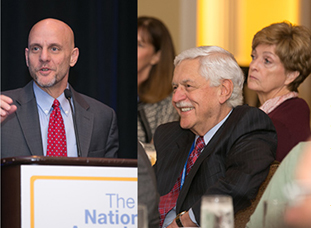 The National Association for Proton Therapy (NAPT) is the voice of the proton therapy community—providing education and awareness for the public, professional and governmental stakeholders about the benefits of proton therapy for treating cancer. Join the NAPT for the National Proton Conference, March 6 – 9, 2017, at the Renaissance Orlando at SeaWorld in Orlando, FL. Organizers anticipate a record-breaking conference with attendees including physicians, nurses, therapists, proton therapy directors, managers, and others involved with, or interested in learning more about proton therapy.
The National Association for Proton Therapy (NAPT) is the voice of the proton therapy community—providing education and awareness for the public, professional and governmental stakeholders about the benefits of proton therapy for treating cancer. Join the NAPT for the National Proton Conference, March 6 – 9, 2017, at the Renaissance Orlando at SeaWorld in Orlando, FL. Organizers anticipate a record-breaking conference with attendees including physicians, nurses, therapists, proton therapy directors, managers, and others involved with, or interested in learning more about proton therapy.
This year both Bob Marckini and Deb Hickey will attend
NPC 2017. We will include a summary of the event in the May issue of BOB Tales.

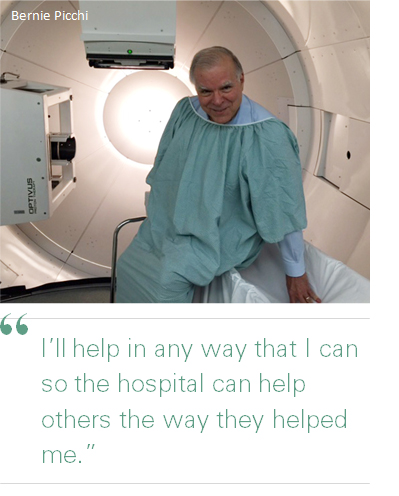 Member Gives Back, Helps Pregnant Mothers and Children
Member Gives Back, Helps Pregnant Mothers and Children
“Bob Marckini changed my life and made it immeasurably better.” This was the first thing BOB member Bernie Picchi said when Deb Hickey recently interviewed him. Bernie was diagnosed with prostate cancer in 2015. His physician, a renowned surgeon, told him to lose 15 pounds and read Patrick Walsh’s book, Surviving Prostate Cancer. Although Bernie had “no interest in doing surgery,” he followed his doctor’s instructions and logged on to Amazon. “I owe a debt of gratitude to my doctor and Amazon,” he said. “On the check-out page, there was a list of related books that other customers bought. Bob’s jumped out at me; I loved the title, You Can Beat Prostate Cancer and You Don’t Need Surgery To Do It. So I bought that too.”
Bernie said he had a difficult time following Dr. Walsh’s book. On the other hand, “It was obvious from Bob’s book that he’d not only done his research; he’d done back flips to make things as clear and unambiguous as possible.”
It didn’t take long before Bernie and his wife, Nancy, were on their way to Loma Linda. Deb asked him about his treatment experience and could immediately sense Bernie’s emotion. “The quality of care and compassion of everyone at LLUCC—from the president to the orderlies—was phenomenal,” he said. “It was a great experience.” Today Bernie feels healthy and has had no side effects.
Last month Bernie made a year-end contribution to LLUH, but it wasn’t directed to proton therapy research. “I wanted to give back for the care I’d received,” Bernie said. “In speaking with Matt Miller in the office of philanthropy, I told him, ‘I’ll help in any way that I can so the hospital can help others the way they helped me.” During that conversation, Bernie opened up about his childhood condition of spina bifida. Back then, it was more prevalent because pregnant women didn’t have access to the same medical care we have these days. “I was born with the most severe type of spina bifida,” Bernie said. “My nerve sac was outside of my body. It had to be reinserted carefully.” He went on to tell Deb one of his earliest memories was his neurosurgeon wrapping a measuring tape around his head to check for hydrocephalus.
Today, spina bifida is rare; it can be prevented during pregnancy with vitamins and overall good nutrition. “I was shocked when Matt told me they treat many children with spina bifida at LLUH,” Bernie said. “Apparently there is a lot of poverty in the area and pregnant women don’t have the access to good prenatal health care. I wanted to help.”
Bernie said, “Loma Linda’s mission, ‘To Make Man Whole,’ is terrific; I see them practicing it everywhere. They walk the talk. Everyone there is so devoted to service. I thought, if they can use my contribution in any way to develop programs for mothers in need and suffering children, I want to help.”
Bernie Picchi is Managing Director of Palisade Capital Management and lives in New York City. He and Nancy are the parents of twin daughters and four grandchildren.
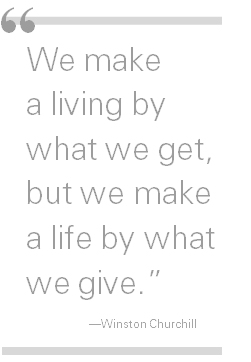 How to Contribute to Proton Research
How to Contribute to Proton Research
- Donate Online: Visit the LLUCC website. Make sure the “Designation Type” is set to “Proton” and the “Designation” is set to “Robert J. Marckini Chair."
- Send a Check: Make your check out to “LLUCC Proton” with “Marckini Chair” on the memo line and send to: LLUH, Office of Philanthropy, P.O. Box 2000, Loma Linda, CA 92354.
- Make a Call: Contribute by phone. Contact Elvia DeHaro at 909-558-5010
- Make a Future Gift: Contact Todd Mekelburg at the Office of Planned Giving at Loma Linda University Health at 909-558-5376 or [email protected].
- Other Ways to Give: Contact Matt Miller at the Office of Philanthropy at Loma Linda University Health at 909-558-3582 or [email protected].

8 Ways to Get Sugar Out of Your Life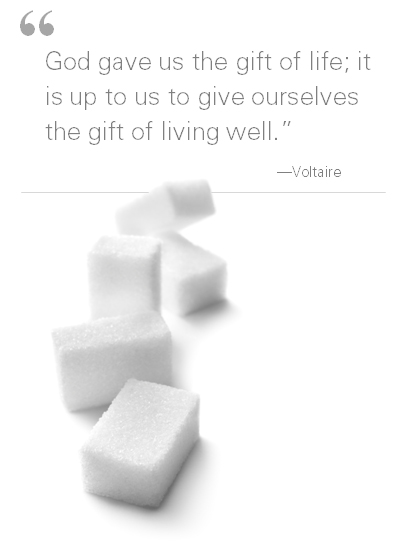
The Anticancer book and series of articles by BOB member Pat Greany over the past few months clearly pointed out the dangers of eating sugar.
Frank Lipman, MD, is an integrative medical specialist and author of The New Health Rules: Simple Changes to Achieve Whole-Body Wellness. He talks about eight simple ways to get sugar out of your life in an article published on Sharecare. They include the following:
- Eat regularly. Eat three meals and two snacks or five small meals a day. When people don’t eat regularly, blood sugar levels drop; they feel hungry and tend to eat sweet sugary snacks.
- Choose whole foods. There is much less processed sugar in food that is close to its original form. Food in its natural form usually presents fewer metabolic problems for a normal body.
- Eat to control cravings. The typical breakfast is full of carbs and sugar. A breakfast of protein, fat, and phytonutrients is excellent. Breakfast smoothies are especially healthful. Incorporating protein and/or fat with each meal helps control blood sugar levels. But they should be healthful proteins and fats.
- Take care of your body and mind. Exercise and get enough sleep. These two things decrease your need for a sugar lift. Also explore the emotional issues around your sugar addiction.
- Keep sugary snacks out of your house and office. You can’t snack on things that aren’t there.
- Learn to read labels. Always check sugar content and choose products with the fewest number of grams of sugar. One teaspoon of sugar is about four grams. Note: sugar comes in many forms, such as agave, corn syrup, high fructose corn syrup, sucrose, dextrose, honey, and molasses.
- Recognize sugar in disguise. So-called “complex” carbohydrates like bread, bagels and pasta are highly refined and act just like sugars in the body.
- Scare yourself straight. There is a strong physical component to sugar addiction. Change the way you think about sugar. Treat it like an illicit drug, a substance that can lead to physical ruin.
Sugar cravings are typically short lived—10 to 20 minutes maximum. If you can distract yourself, it often passes. The more you do this, the easier it gets and the cravings are easier to deal with. If you truly need something sweet, eat a piece of fruit. This is a much more healthful option.
10 Bad Habits that Age You
Following are 10 bad habits that can age you according to Keith Roach, MD, chief medical officer, Sharecare.
- You’re a couch potato. You’re are never too old or out of shape to benefit from daily exercise.
- You overdo happy hour. Most people can tolerate one or two drinks a day. But downing more than two drinks a day for men (one drink for women) can lead to health problems like liver disease, high blood pressure, and obesity.
- You eat like you’re in college. Burgers, pizza, and ice cream lead to high cholesterol and/or high blood pressure. That’s because saturated and trans-fats raise LDL (bad) cholesterol. This builds up in arteries, blocks blood flow, damages blood vessels, and causes inflammation. Shoot for lean protein, whole grains, and four to five cups of fruits and veggies a day.
- You light up. “Smoking has a detrimental effect on almost every cell in the body,” says Mehmet Oz, MD. It increases your risk for heart disease, and stroke, as well as cancers of the lung, blood, bladder, esophagus, kidney, mouth, throat, stomach, and uterus.
- You stress out over everything. Everyone has stress from time to time. But if your stress level is high on a regular basis your health will take a serious hit. Some of the effects are memory loss, high blood pressure, weight gain and a weakened immune system. Stress also causes free radicals to run wild, breaking down collagen and creating wrinkles. Regular exercise, meditation, and yoga can help.
- You sit more than you stand. Research has linked prolonged sitting to cancer, obesity, and type-2 diabetes. It also negatively affects your blood sugar, cholesterol, and blood pressure.
- You’re unhappily married. People who are happily married tend to have lower risk of heart disease, cancer and lower blood pressure.
- You mainly “see” your friends online. A strong social network nurtured by face time (not Facebook time) with family and friends has been shown to boost mood, improve your ability to cope with adversity, and strengthen your immune system.
- You skimp on sleep. Sleeping less than six to nine hours a night could throw off your appetite-regulating hormones causing you to eat more and gain weight. Lack of sleep has also been linked to heart disease and stroke.
- You neglect your smile. Paying attention to your teeth has much more to do with your health than your appearance. Neglecting your teeth can lead to gum disease and tooth loss, bacteria build up, inflammation, and heart disease. Brushing and flossing daily are critically important to good health.
Series: “Make Vegetables Taste Good”
This is the seventh segment on a subject that’s consistent with our Anticancer series. Deb Hickey made it her mission to find recipes that make the most healthful vegetables taste delicious. She also learned that some vegetables fight specific health issues while others interact with each other to become “super” foods that target specific cancers.
We haven’t received much feedback on this series. If you enjoy the recipes and would like to see them continue, please let us know. Based on your feedback, we will decide whether or not to continue.
Have a vegetable-based recipe that you think others will enjoy? Send it to us!
Bob Marckini’s Favorite Pasta e Fagioli Recipe
Pasta e Fagioli is a healthful and hearty soup that can be served as an appetizer or a main course along with a healthful salad. The following recipe is from Good Housekeeping Favorite Recipes – Vegetarian Meals.
Time: 45 - 60 mins / makes about nine cups of soup.
Ingredients:
- 1 tbsp. olive oil
- 1 can cannellini beans rinsed/drained
- ¼ tsp. ground black pepper
- 1 small onion, sliced
- 1 can (14 ½ oz.) diced tomatoes
- ½ cup tubettini or ditalini pasta
- 1 large stalk celery, sliced
- 2 cloves minced garlic
- 1 package (10 oz.) frozen or fresh spinach
- 2 ½ cups vegetable broth
- 1 tsp. sugar L (could substitute stevia)
- 2 cups water
- ¼ tsp. salt
Directions:
- Cook pasta according to directions on box. Drain and set aside.
- In 6 – 8 quart Dutch oven, heat oil over medium heat until hot. Add onion and celery and cook, stirring occasionally, until vegetables are tender, about 14 – 16 minutes.
- Meanwhile, in a 2-quart saucepan, heat broth and water to boiling over high heat.
- Add beans, tomatoes, garlic, sugar, salt and pepper to onion mixture. Heat to boiling over high heat. Add broth mixture and pasta. Heat to boiling. Reduce heat to medium and cook 5 minutes. Add frozen spinach, cook, stirring frequently to separate spinach, about 3 – 4 minutes longer.

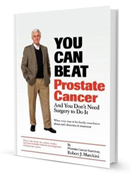
Amazon Reviews: Something Strange Going On …?
For many years we’ve been reporting that Bob Marckini’s book has more reviews than any other prostate cancer-related book in the top 50 Amazon search results. Recently we noticed a significant surge in reader reviews for Dr. Patrick Walsh’s book, Surviving Prostate Cancer. In fact, reviews doubled in one week. We don’t know how this happened, but Bob’s is no longer the prostate cancer book with the most reader reviews on Amazon.
If you’ve read Bob’s book—even if you read it years ago—and you found it helpful, we need your Amazon review more than ever. Book reviews aid in boosting the book’s visibility within Amazon’s search results for users looking for information on prostate cancer treatments and/or proton therapy. And each review is important to the person considering making a purchase. Studies show that 88 percent of people trust online reviews as much as a personal recommendation. Why do we regularly ask for reviews? Seventy-three percent of consumers think that reviews older than three months are no longer relevant.
Please keep the book reviews coming. Post a review today. Thank you!

Proton Radiation Therapy: The Best Research on the Best Treatment
This book is a must-read for any man that has prostate cancer. Mr. Marckini has done months of research on proton treatment for prostate cancer. Read and learn all you can. Then, visit www.protonbob.com and request to speak with former patients. Do not just listen to your doctor's opinion. Do your own research. I highly recommend this book. —Amazon Customer, 1/24/17

All Three Urologists Had Different Plans for My Prostate.
I could not put the book down. I had already seen three urologists and they each had different plans for my prostate (I was “perfect” for each treatment). Upon completion of reading “You Can Beat Prostate Cancer,” I went to MD Anderson for proton therapy. I have no regrets. —Amazon Customer, Carl Stubbs, 11/16/16
Buy Online, in Bulk or in Spanish
Online: Paperback: $19.00--•--Kindle: $9.99--•--NOOK Book: $9.99--•--Apple iBook: $9.99
In Bulk: Conctact us for a discount price list. Proceeds from book sales support proton therapy research through the Robert J. Marckini Endowed Chair at LLUCC.
In Spanish: Buy the print version or in eBook format.

Last Month’s Brain Teaser
What is the longest word in the English language?
Note: There are multiple answers to this question.
According to Wikipedia, the identity of the longest word in English depends upon the definition of what constitutes a word in the English language, as well as how length should be compared. In addition to words derived naturally from the language’s roots (without any known intentional invention), English allows new words to be formed by coinage and construction; place names may be considered words; technical terms may be arbitrarily long. Length may be understood in terms of orthography and number of written letters, or (less commonly) phonology and the number of phonemes.
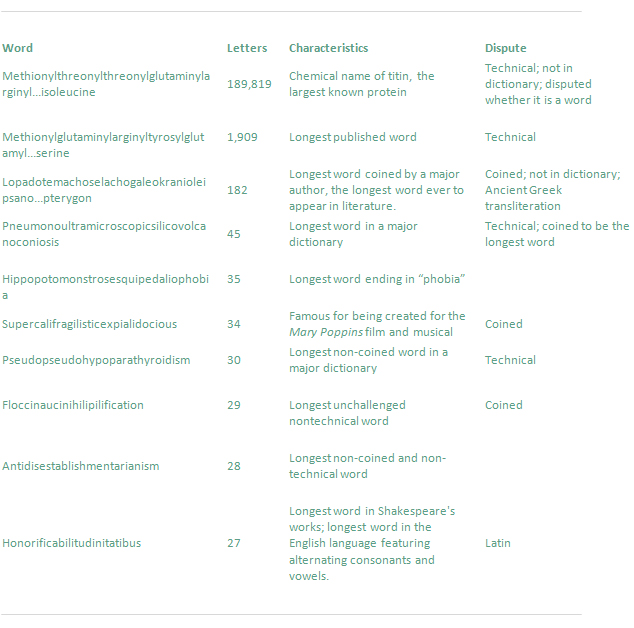
February Brain Teaser Winner:
BOB member Rick Smith of Fort Mohave, AZ was the first to submit one of many correct answers to last month’s brain teaser. Incidentally, he was also the fifth to write in with another correct answer.
Rick was treated for prostate cancer more than 11 years ago at age 72. Today he is 83, and although he’s experiencing some minor aches and pains due to aging, Rick tells us he feels fine.
Rick has several hobbies that keep him busy; one is creating computer-generated art.
Rick is retired from the Jet Propulsion Laboratory in Pasadena, CA.
New Brain Teaser
Last month’s brain teaser probably wasn’t fair, so here’s an easy one:
There are two bugs in a gallon jar. Every minute, the number of bugs doubles. If the jar is filled in half an hour, how long is it before the jar is only half filled?
As always, send your brain teaser answer to [email protected] for a chance to win a signed copy of Bob Marckini’s book, You Can Beat Prostate Cancer.
What Kids Say
How do you decide whom to marry?
“You got to find somebody who likes the same stuff. Like, if you like sports, she should like it that you like sports, and she should keep the chips and dip coming.” —Alan, age 10
“No person really decides before they grow up who they’re going to marry. God decides it all way before, and you get to find out later who you’re stuck with.” Kristen, age 10
What is the right age to get married?
“Twenty-three is the best age because you know the person FOREVER by then.” —Camille, age 10
How can a stranger tell if two people are married?
“You might have to guess, based on whether they seem to be yelling at the same kids.”—Derrick, age 8
What do you think your mom and dad have in common?
“Both don’t want any more kids.” —Lori, age 8
What do most people do on a date?
“Dates are for having fun, and people should use them to get to know each other. Even boys have something to say if you listen long enough. —Lynnette, age 8
“On the first date, they just tell each other lies and that usually gets them interested enough to go for a second date.” —Martin, age 10
When is it okay to kiss someone?
“When they’re rich.” —Pam, age 7
“The law says you have to be 18, so I wouldn’t mess with that.” —Curt, age 7
“The rule goes like this: If you kiss someone, then you should marry them and have kids with them. It’s the right thing to do.” —Howard, age 8
Is it better to be single or married?
“It’s better for girls to be single, but not for boys. Boys need someone to clean up after them.” —Anita, age 9
How would the world be different if people didn’t get married?
“There sure would be a lot of kids to explain, wouldn’t there?” —Kelvin, age 8
And our #1 favorite is …
How would you make a marriage work?
“Tell your wife that she looks pretty, even if she looks like a dump truck.” —Ricky, age 10
Old Age
- When you get old, your secrets are safe with your friends. They'll never share them because they can’t remember them.
- At my age, I don’t want to eat health food. I need all the preservatives I can get.
- I’m done with wild oats; I’m into prunes and All-Bran.
- What’s the secret to longevity? Simple. Keep breathing.
- I knew I was getting bald because it was taking longer and longer to wash my face.
- Isn’t it nice that wrinkles don’t hurt?
Quote of the Month:
“Be decisive. Right or wrong, make a decision. The road of life is paved with flat squirrels that couldn’t make a decision.”
—Unknown

The Whale
This is a beautiful act of God’s love working in men’s hearts and even the whale knows it!
A few years ago, the San Francisco Chronicle ran a front-page story about a female humpback whale that had become entangled in a web of crab traps and lines. She was weighted down by hundreds of pounds of traps that caused her to struggle to stay afloat. She also had hundreds of yards of line rope wrapped around her body, her tail, her torso, and a line tugging in her mouth.
A fisherman spotted her just east of the Farallon Islands (outside the Golden Gate) and radioed an environmental group for help. Within a few hours, the rescue team arrived and determined that she was so entwined with rope and debris, the only way to save her was to dive in and untangle her. They worked for hours with curved knives and eventually freed her.
When she was free, the divers say she swam in what seemed like joyous circles. She then came back to each and every diver, one at a time, and nudged them, pushed them gently around as she was thanking them. Some said it was the most incredibly beautiful experience of their lives. The guy who cut the rope out of her mouth said her eyes were following him the whole time, and he will never be the same.
May you and all those you love be so blessed and fortunate to be surrounded by people who will help you get untangled from the things that are binding you. And, may you always know the joy of giving and receiving gratitude.
Low PSAs to all,
Bob Marckini and Deb Hickey
To print the BOB Tales newsletter or view the newsletter with a larger font size, click here for the PDF file.
NO MEDICAL ADVICE: Material appearing here represents opinions offered by non-medically-trained laypersons. Comments shown here should NEVER be interpreted as specific medical advice and must be used only as background information when consulting with a qualified medical professional.
